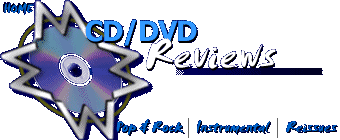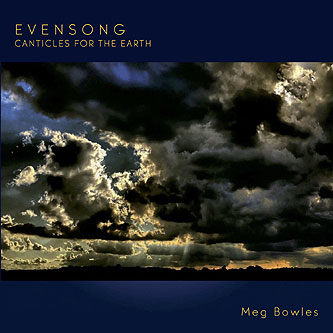 Connecticut-based
composer and recording artist Meg Bowles is making inroads
in the New Age world once again with her 2018 album Evensong
/ Canticles For The Earth. Released on her Kumatone
label the seven track, 63 minute instrumental music CD is filled with
relaxing, sublime sounding New Age electronics that will fill your
spirit and mind with peace and harmony. Meg describes the album as
being a tribute to planet Earth and what she calls the “ritual
spaces of evening – both light and dark.” Speaking about
her unique and cosmic electronic music style, Meg tells mwe3.com,
"As a composer-synthesist I find myself combining elements
of various genres that speak to me. Having been trained as a classical
musician, an important part of my musical identity, there are plenty
of influences from that lineage in my work. How I orchestrate, interpret,
and mix is directly related to the formative years I spent studying
and performing orchestral works as a music student. Although my music
is atmospheric, there is more structure and form to it than in purely
ambient works, probably due to my background." Interesting
to note that Meg has a number of albums released on her label that
are each filled with orchestrated ambient synth soundscapes. Essential
listening for fans of electronic music pioneers such as Tangerine
Dream and Steve Roach, as well as more recent albums by synth music
artist Hollan Holmes, on Evensong / Canticles For The Earth, Meg
Bowles creates state-of-the-art New Age electronic music for the 21st
century that carries forward the worldwide tradition of smart musicianship.
www.megbowlesmusic.com
Connecticut-based
composer and recording artist Meg Bowles is making inroads
in the New Age world once again with her 2018 album Evensong
/ Canticles For The Earth. Released on her Kumatone
label the seven track, 63 minute instrumental music CD is filled with
relaxing, sublime sounding New Age electronics that will fill your
spirit and mind with peace and harmony. Meg describes the album as
being a tribute to planet Earth and what she calls the “ritual
spaces of evening – both light and dark.” Speaking about
her unique and cosmic electronic music style, Meg tells mwe3.com,
"As a composer-synthesist I find myself combining elements
of various genres that speak to me. Having been trained as a classical
musician, an important part of my musical identity, there are plenty
of influences from that lineage in my work. How I orchestrate, interpret,
and mix is directly related to the formative years I spent studying
and performing orchestral works as a music student. Although my music
is atmospheric, there is more structure and form to it than in purely
ambient works, probably due to my background." Interesting
to note that Meg has a number of albums released on her label that
are each filled with orchestrated ambient synth soundscapes. Essential
listening for fans of electronic music pioneers such as Tangerine
Dream and Steve Roach, as well as more recent albums by synth music
artist Hollan Holmes, on Evensong / Canticles For The Earth, Meg
Bowles creates state-of-the-art New Age electronic music for the 21st
century that carries forward the worldwide tradition of smart musicianship.
www.megbowlesmusic.com
mwe3.com presents an interview with
MEG BOWLES
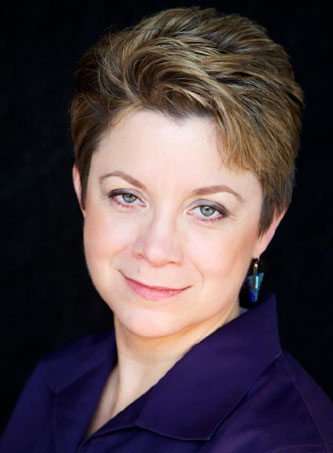 mwe3:
Can you tell us where you’re from originally and where you live
now and what you like best about it? What cities and states in the
US and countries outside the U.S. do you like to visit? Looks like
the world has gotten a lot smaller in the past 20 years since the
internet took over.
mwe3:
Can you tell us where you’re from originally and where you live
now and what you like best about it? What cities and states in the
US and countries outside the U.S. do you like to visit? Looks like
the world has gotten a lot smaller in the past 20 years since the
internet took over.
Meg Bowles: I’ve pretty much stayed on the East Coast—born
in New Jersey, grew up in suburbs of New York City and Washington
D.C., then finished college/worked in Boston and then finished grad
school/worked in New York City until my husband and I decided to move
out to Connecticut, eventually landing in a semi-rural, small town
where we have much more space and interaction with nature. We’ve
lived on Candlewood Lake in western Connecticut now for over twenty
years and love being near the water, and all that wildlife. As for
other places in the U.S. that I have visited, I adore New Mexico for
its cultural diversity, the smell of roasting green chiles, and that
high desert landscape with that stunningly huge sky and low humidity—quite
the opposite of the moist and verdant space where I live. Many other
places I’ve visited and loved are found close to the ocean or
a lake...
Maine,
Michigan, Cape Cod, Little St. Simon’s Island in Georgia, the
Florida Keys, New Orleans, the San Francisco area and points north.
And of course there is no comparison to this country’s national
parks, like Yosemite, Grand Canyon, and Monument Valley, all of which
I’ve been fortunate to visit. There are so many places yet to
explore here and abroad, especially those off the beaten path…
I could go on and on.
mwe3: When and how did you become interested in electronic
space music or cosmic synthmusic? Were you interested in early synth
music and the artists that created it?
Meg Bowles: I think my attraction to science fiction, especially
in television, played a role in my becoming interested in synthesized
sound and eventually, in composing space music. There was a TV series
called “The Outer Limits” which fascinated and terrified
me as a kid. I remember loving the eerie score, which was sometimes
enhanced with electronic sounds, which I found pretty cool. The synthesized
sounds that were emerging more frequently in film score writing by
the early eighties… I’m thinking Tangerine Dream’s
score to Risky Business definitely caught my ear. In the late
1980’s I discovered the music of Brian Eno and Steve Roach, and
from there I was hooked, especially once a friend turned me on to
Stephen Hill’s iconic show, Music From The Hearts Of Space.
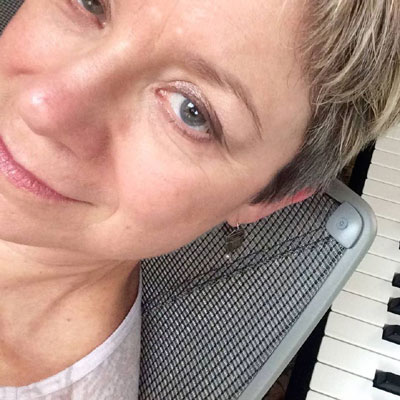 mwe3:
Do you find there are differences and links between cosmic space music,
classical music and ambient New Age music as well as healing or therapeutic
music? Your 2018 album Evensong: Canticles For The Earth borrows
from all genres, so did you strive to combine a number of genres of
music on your Evensong album?
mwe3:
Do you find there are differences and links between cosmic space music,
classical music and ambient New Age music as well as healing or therapeutic
music? Your 2018 album Evensong: Canticles For The Earth borrows
from all genres, so did you strive to combine a number of genres of
music on your Evensong album?
Meg Bowles: As a composer-synthesist I find myself combining
elements of various genres that speak to me. Having been trained as
a classical musician, an important part of my musical identity, there
are plenty of influences from that lineage in my work. How I orchestrate,
interpret, and mix is directly related to the formative years I spent
studying and performing orchestral works as a music student. Although
my music is atmospheric, there is more structure and form to it than
in purely ambient works, probably due to my background.
Music can be experienced as deeply healing, but that depends upon
the unique field of resonance that may, or may not, engage a listener’s
body and psyche. I do not claim that my creative work is specifically
designed to be therapeutic, which is too suggestive for my comfort,
although I am aware of making use of certain styles that are also
associated with music that is perceived to be healing. Instead, I’d
rather the listener have his/her own experience, whatever that is.
mwe3: What were some of the key events, musical or otherwise
that led to the creation of the Evensong: Canticles For The Earth
album? How does Evensong feel like the latest episode in your
musical evolution, compared to your earlier albums? You said that
Evensong is kind of a reflection, not only of Earth but also
of your own journey in life. Can you elaborate?
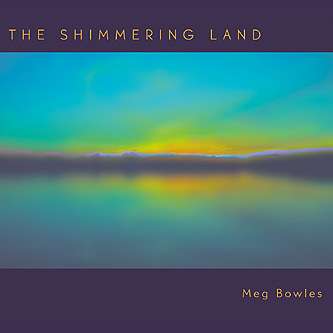 Meg
Bowles: I think that artists not only create because they find
it deeply meaningful and, hopefully, satisfying—they
create because they must. Something in their souls/psyches demands
it, and when they put that demand off by choice or out of necessity,
that energy becomes diverted elsewhere, with consequences. In my case,
I tend to sink into a depression.
Meg
Bowles: I think that artists not only create because they find
it deeply meaningful and, hopefully, satisfying—they
create because they must. Something in their souls/psyches demands
it, and when they put that demand off by choice or out of necessity,
that energy becomes diverted elsewhere, with consequences. In my case,
I tend to sink into a depression.
Composing was pretty sporadic for several years after The Shimmering
Land (2013). A lot of my time and energy was spent tending to
ailing elderly parents on one hand... my mom passed away two years
ago after a long, hideous and complicated battle with Alzheimer’s
and Parkinson’s, and helping our daughter navigate her way through
a really challenging period in her adolescence on the other - not
all that unusual for us “sandwich generation” people. Sometimes
all I could manage to do in the studio was to work on a phrase here
or there. Eventually pieces began to coalesce, but it was very difficult
to find longer stretches of time in the beginning.
By the end of the day I would often feel drawn to reconnect with nature
to clear my head and my heart... to soak in the light, the landscape,
the sounds, and the scents, and to take in the sheer physicality of
it all which was a balm for my often frazzled mind. Feeling the appreciation
and joy of just being present with the trees and the animals, I would
often become aware of feeling gratitude for being home, for being
rooted in the land and for being a small part of the mystery that
connects us all to each other and to the Cosmos. I felt held by the
Earth, and enormously thankful for that. And so these walks became
sort of a ritual for me, to re-center myself and reflect upon the
day.
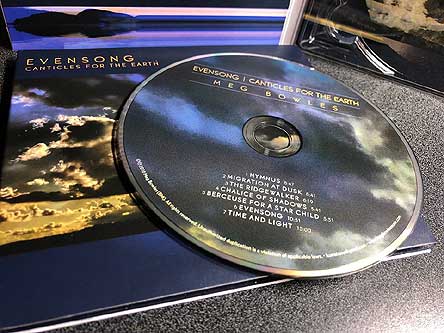 mwe3:
Is that evening time of day, when day turns to night and the sky gets
kind of deeply blue, the most powerful time for you on both a personal
and musical perspective? Are you more of a morning or evening person?
mwe3:
Is that evening time of day, when day turns to night and the sky gets
kind of deeply blue, the most powerful time for you on both a personal
and musical perspective? Are you more of a morning or evening person?
Meg Bowles: I love it all! Compared with my husband and daughter,
I am probably a morning person, having never been able to sleep late.
I love being the first one up to make coffee, and I also love the
evening as it draws well into night, which can be a very creative
time for me. Those times of transition are the most powerful for sure,
whether the light is growing or receding.
mwe3: The animals and birds inspire you to during your walks
by the lake. How does nature and its inhabitants inspire you and your
music? You have two Akita dogs so you must pick up their energy.
Meg Bowles: For me, composing is the regular practice of making
time to work in my studio with whatever I’ve got. The music seems
to emerge in a parallel process with whatever is going on in my life,
although it is not about those things in my life per se. For me, the
connection is more indirect. Music is like a dream, but in sound.
It contains some elements of symbolism and some references to a waking
dimension of reality, but it is a language and a structure unto itself
which transmits a range of emotion and sensate experience that goes
beyond words. The tracks in the album were pretty much fleshed out
musically before I began the task of trying to tie them together into
a narrative body of work, including giving them titles. That is where
walking the land came in, which for me is a time of contemplation.
I allowed my personal end-of-day ritual to become part of the creative
process, to help me to figure out the stories behind the pieces, and
to reveal on another level what I might have been writing about all
along but never articulated to myself until shortly before the work
felt ready to be shared.
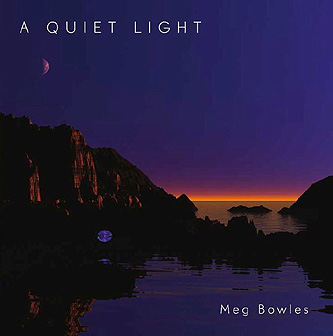 mwe3:
You speak about gratitude in your music. Are your albums and recordings
your ways to give back to the Earth by inspiring calmness and serenity?
How else can we find ways to express gratitude and thanks to improve
our lives? How about meditation?
mwe3:
You speak about gratitude in your music. Are your albums and recordings
your ways to give back to the Earth by inspiring calmness and serenity?
How else can we find ways to express gratitude and thanks to improve
our lives? How about meditation?
Meg Bowles: I think that part of what artists do is to serve
as visionaries and storytellers. We take in our worlds and respond
to that as we work in a creative medium that gives physical expression
to a piece of that ever-present, multidimensional dialog that is a
part of life. Music opens eyes and ears to a different way of being
in that each piece carries us into a deeply felt experience with a
beginning, a middle, and an end, much like a life. So yes, I think
artists give back to the world by re-imagining it and by re-enchanting
our capacity to be present to it. One way of looking at Evensong
is to think of the album as a response in song to Earth’s “call.”
These pieces share some of my personal stories around the planet’s
beauty and power and quiet awe, honoring the darkness as well as the
light, that has been a part of my life in this small corner of the
world, on the lake where I live.
mwe3: You co-produce your releases with your husband Richard
Price, who also does the engineering of your albums. What are some
of the processes you and Richard go through when you record and master
your music for disc?
Meg Bowles: My work is finished before I present it to Richard.
What that means is that it is... hopefully! as close to being “master
ready” as I can get, save for final EQ adjustments and relative
level adjustments between tracks. Occasionally I need to go back and
adjust the dynamics of some individual voices. We listen separately
and together in a multitude of ways and are usually on the same page
with respect to the overall sound and approach, which is a good thing.
He has phenomenal ears and impeccable musical judgment, so when he
feels strongly about making or not making a change, I have learned
to trust that, especially when I invariably fall into the tweak trap
towards the very end of a project.
mwe3: How does the internet affect you both as a musician and
as a visitor of the internet? Have social media sites like Facebook,
Twitter and the rest become information overload? Is a sense of wonder
lost somewhat? I was just thinking about the upsides and downsides
of Youtube as well. Speaking of the internet, I wanted to commend
you for your bandcamp page, which is wonderful. What are some of your
favorite web sites, both as a musician and an online visitor?
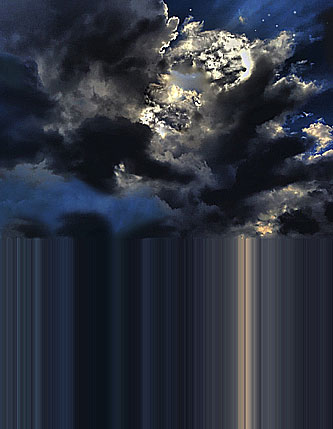 Meg
Bowles: Well thank you! Bandcamp is definitely my favorite website
for discovering and presenting new music. I find it elegant and intuitive.
And I love being able to adjust the design to reflect newer work,
or simply to change things up a little. The internet has dramatically
affected our experiences and the rhythm of our lives whether we like
it or not. There are positives and negatives. The social networking
piece can be fruitful or it can be poisonous, so choosing how to put
yourself out there and what to pay attention to is important. Bearing
in mind that these platforms are not necessarily benign is smart.
Facebook for example, is brilliantly and diabolically designed to
monetize, the illusion of, connection by engineering an addictive
virtual experience with few boundaries. Personally, I use Facebook
in a limited way and have found that to work pretty well.
Meg
Bowles: Well thank you! Bandcamp is definitely my favorite website
for discovering and presenting new music. I find it elegant and intuitive.
And I love being able to adjust the design to reflect newer work,
or simply to change things up a little. The internet has dramatically
affected our experiences and the rhythm of our lives whether we like
it or not. There are positives and negatives. The social networking
piece can be fruitful or it can be poisonous, so choosing how to put
yourself out there and what to pay attention to is important. Bearing
in mind that these platforms are not necessarily benign is smart.
Facebook for example, is brilliantly and diabolically designed to
monetize, the illusion of, connection by engineering an addictive
virtual experience with few boundaries. Personally, I use Facebook
in a limited way and have found that to work pretty well.
mwe3: Your celestial music is enhanced by your choice of artwork
to drape your CDs in. How do you choose and design your album artwork?
Artwork and music releases have been synonymous for decades, so it's
been kind of sad to see it go out of eras now. I also like the way
you packed the Evensong CD in that flexi type plastic case.
What pressing plant did you use for the CD and packaging? It's the
first I ever saw it and I like that packaging!
Meg Bowles: I really enjoy developing the artwork and working
out the whole design of the package. Offering the physical product
still feels important to me, despite the fact that that many listeners
are opting to stream rather than buy CDs. With both Evensong
and Shimmering Land, I played around with manipulating digital
photographs I took. Both covers began with captures of actual images
from this world, and then were edited, applying various effects, in
ways that brought them into another dimension - at least that was
my goal. For the past few albums I have used Oasis CD and Manufacturing.
I have been using their Zero Carbon Footprint™ Digipak® for
my releases.
mwe3:
One downside of the internet is that, while artists can find fans
and supporters far and wide, there are far fewer live concert events,
perhaps because artists feel they can connect on Facebook or Youtube
“hangouts”. How about live concerts? Do you like concerts
or not, both as a musician and a concert goer? Seems like every time
I go to a show, there’s many people, either talking, filming
the show and texting on their cell phones and just not really becoming
immersed in the music like we used to do when we were younger.
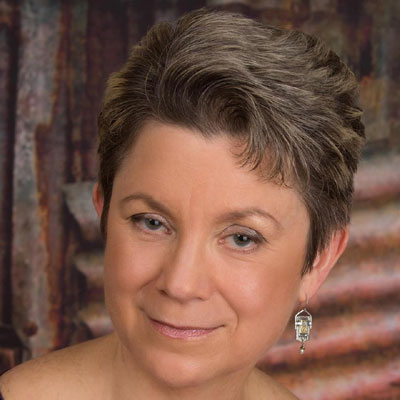 Meg
Bowles: That’s a downside for sure. Aside from the rudeness
factor which is unfortunate, I find many live performances which use
amplification to be painfully loud. As for performing live, my music
is composed of many layers, like sculpture, which would need to be
deconstructed and organized to give the illusion of a performance
in real time. I’m just not interested in doing that. There’s
also the fact that I just use a computer and a midi controller, which
is not particularly exciting to watch, nor do I possess any keyboard
chops. So performing live is not an option.
Meg
Bowles: That’s a downside for sure. Aside from the rudeness
factor which is unfortunate, I find many live performances which use
amplification to be painfully loud. As for performing live, my music
is composed of many layers, like sculpture, which would need to be
deconstructed and organized to give the illusion of a performance
in real time. I’m just not interested in doing that. There’s
also the fact that I just use a computer and a midi controller, which
is not particularly exciting to watch, nor do I possess any keyboard
chops. So performing live is not an option.
mwe3: Since you’ve been recording since the early 1990s,
how has your choice of synths and keyboards changed your music, your
recording and composing too? Was there a main keyboard that you used
to make Evensong with and what do you think about the current
state of the art synths and electronic keyboards available to musicians?
Meg Bowles: I work exclusively with software synth plugins
within Logic Pro, and have done so for years, often turning to Spectrasonics
Omnisphere 2, U-he Zebra, and Camel Audio’s Alchemy—which
was incorporated into Logic Pro several years ago—among
others. Being able to access such versatility within such a minimalist
physical setting really appeals to me, especially with having such
a small studio space. Most importantly, they sound good. I do have
a Kurzweil K-2500 keyboard but at this point it functions solely as
a midi controller.
mwe3: I learned that you’re a licensed psychoanalyst and
you specialize in creativity and trauma. Are you finding that because
the internet of 2018, has literally created the first real 21st century
cultural / consciousness / identity shift, and that it’s affected
us both good and bad ways? Is there a disconnect for some, at least
psychologically between discerning between the internet and the real
world?
 Meg
Bowles: Like any major shift, there are positives, negatives,
and unintended consequences. I feel deeply concerned about the darker,
more dystopian potential of the internet, and the tendency to substitute
more and more virtual experiences for in-person contact, simply because
it is so immediately accessible and convenient. There are incredibly
wonderful uses for virtual contact over long distances, but unquestionably
the two are very different. I do fear that our disconnect with the
natural world is becoming more profound with each generation, as described
in Richard Louv’s book, Last Child in the Woods.
Meg
Bowles: Like any major shift, there are positives, negatives,
and unintended consequences. I feel deeply concerned about the darker,
more dystopian potential of the internet, and the tendency to substitute
more and more virtual experiences for in-person contact, simply because
it is so immediately accessible and convenient. There are incredibly
wonderful uses for virtual contact over long distances, but unquestionably
the two are very different. I do fear that our disconnect with the
natural world is becoming more profound with each generation, as described
in Richard Louv’s book, Last Child in the Woods.
mwe3: Your music is yet another useful medium in surviving
the madness of the 21st century. Is that something you’ve discovered
that you’ve heard from people is the subtle calming effects of
your music? So now that Evensong is available, what other directions,
musically and otherwise, are you thinking of going in next?
Meg Bowles: Listeners comment about how my music seems to engage
the imagination and create a sense of inner peace. The ambient genre
in general, with the emphasis upon texture, use of drones and subtle,
repetitive rhythmic elements and so forth, really does have a way
of engaging just enough of the brain so that a listener can relax
or work on something creative of their own, or simply allow their
consciousness to shift into a different space. As for my next project,
I’m not really sure right now what direction that will take...
I’ve learned over the years to keep an open mind and trust what
emerges next!
